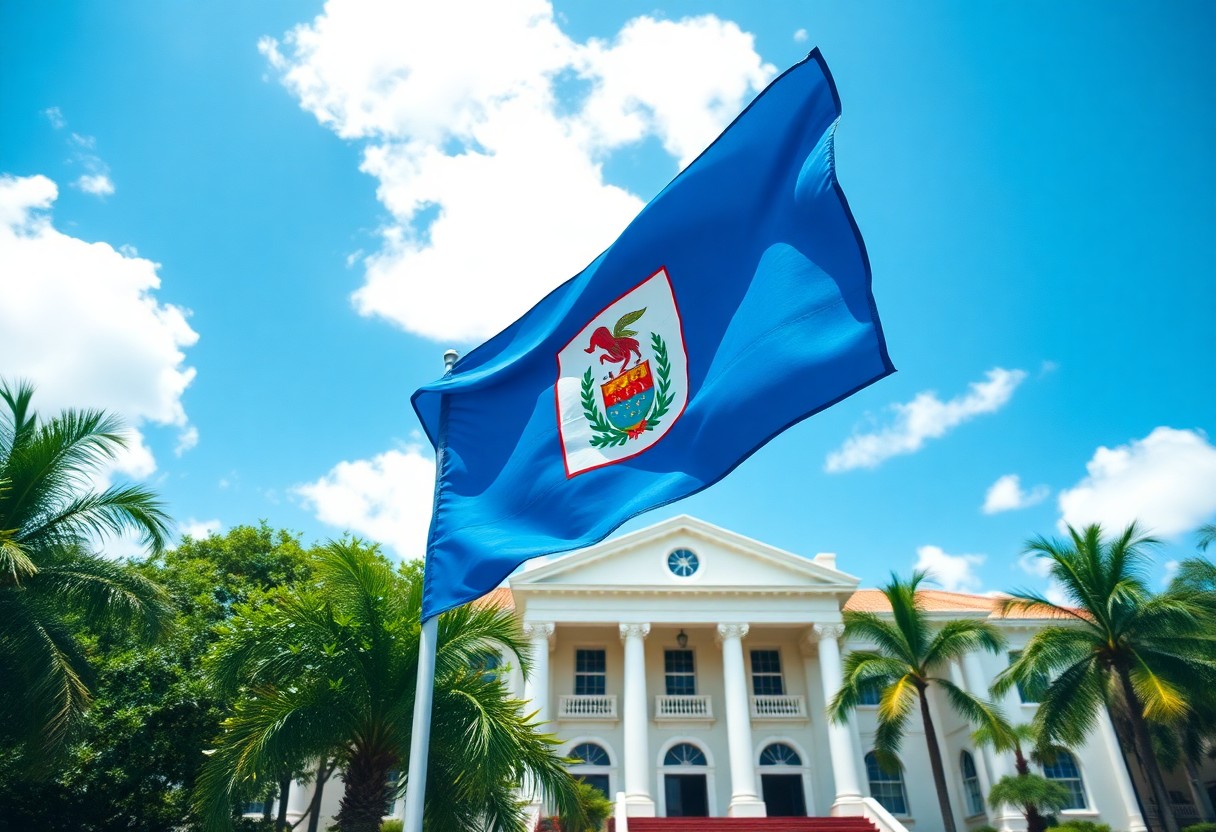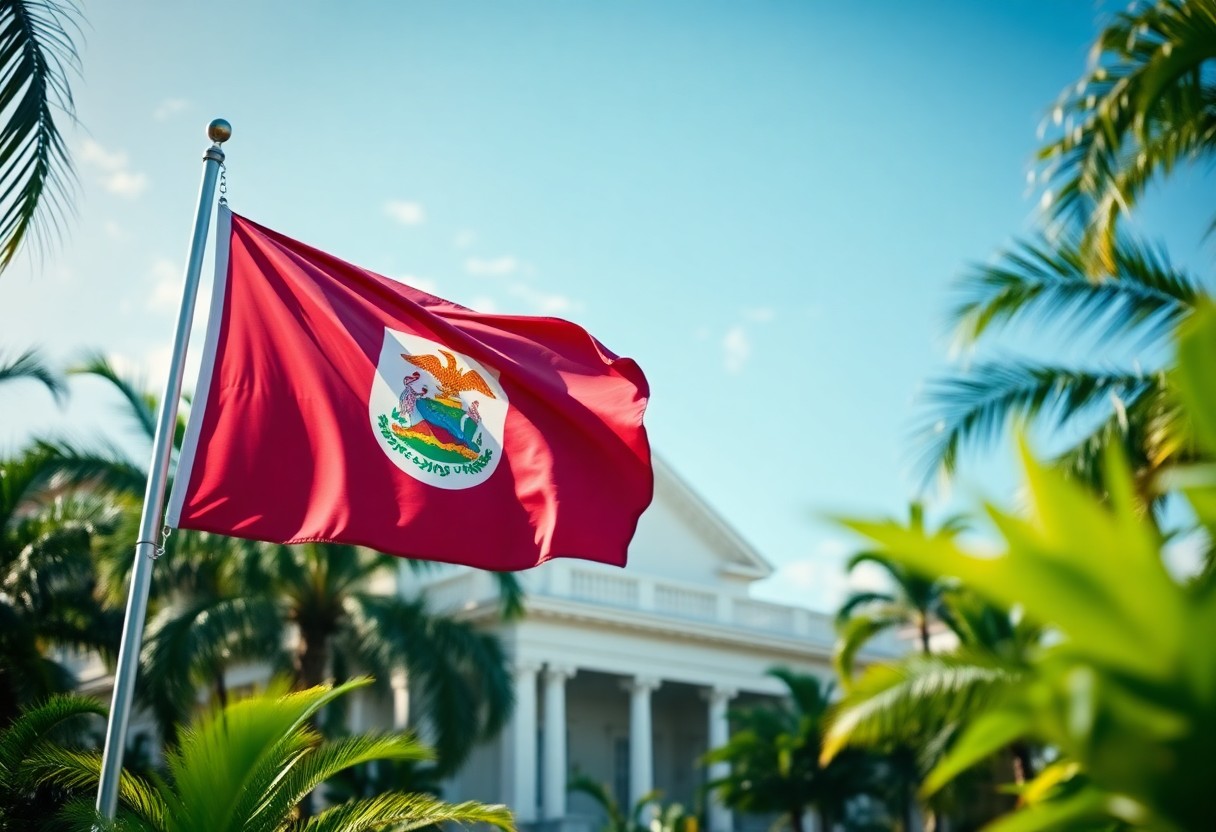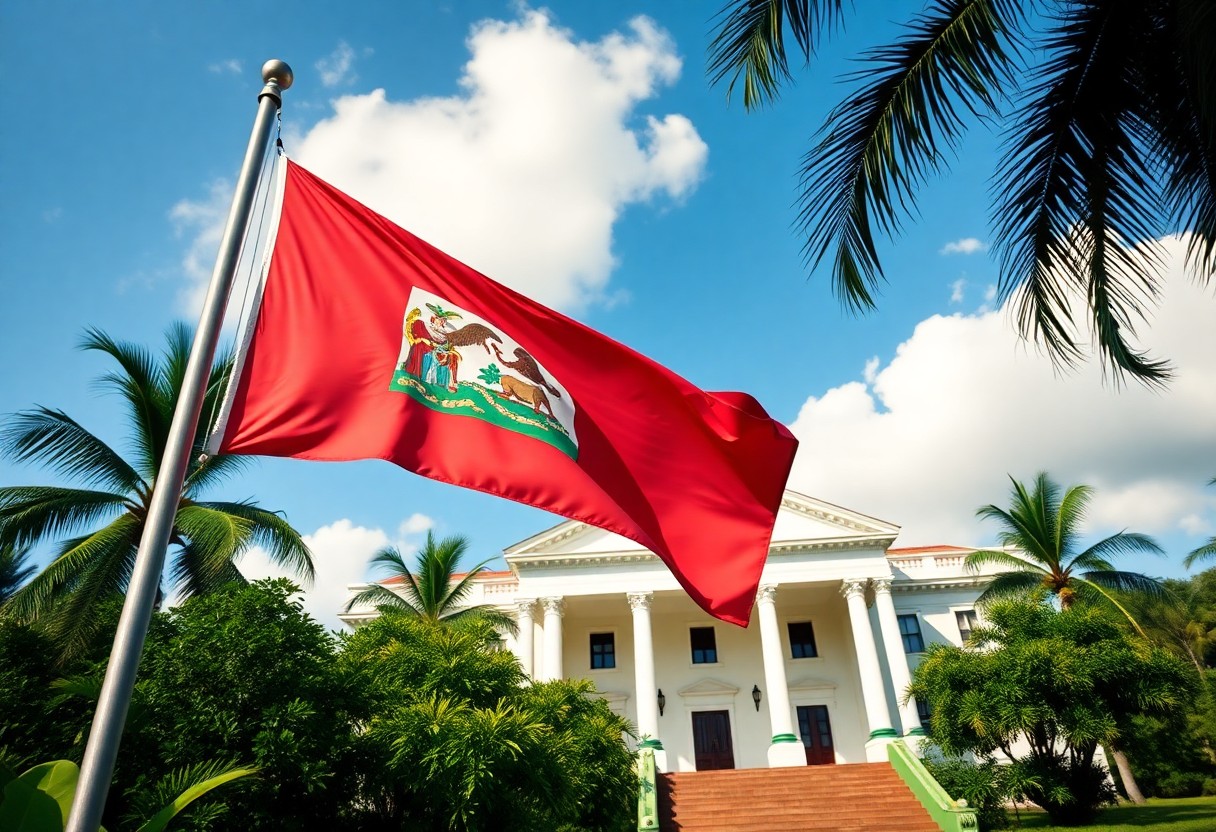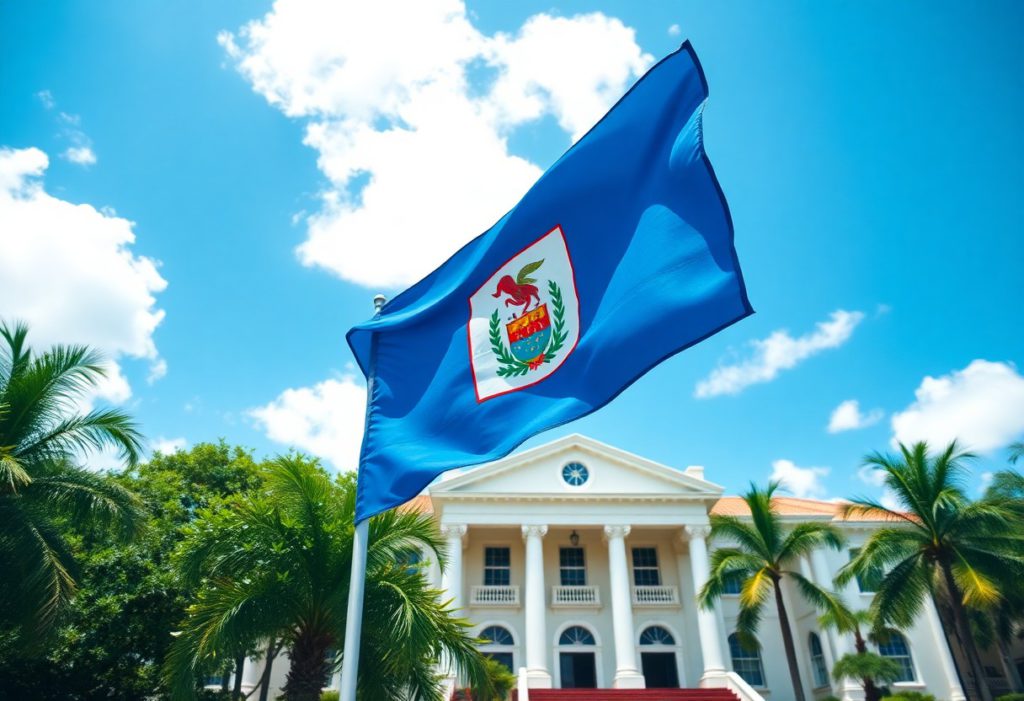Discovering the Journey of Belize Towards Independence is essential for understanding the rich tapestry of Belizean identity and its historical context. This article will explore the crucial historical milestones that shaped the nation’s evolution into an independent state. We will examine the persistent struggles against colonial rule, the pivotal treaties that were enacted, and the remarkable achievement of self-governance achieved in 1981. These historical milestones not only highlight the strength and resolve of the Belizean people but also showcase the transformative developments that laid the groundwork for a democratic Belize. Join us in this enlightening exploration of the significant milestones that define Belize’s national identity today.

Diving into the Vibrant Pre-Colonial Heritage of Belize
Prior to European contact, the pre-colonial era in Belize thrived with a rich diversity of indigenous cultures and profound historical narratives. Various indigenous groups flourished in this region, with the Maya civilization standing out as the most significant. These societies cultivated intricate social hierarchies, developed advanced agricultural practices, and established extensive trade networks that were remarkable for their era. The cultural legacy from this time period laid essential foundations for Belize’s contemporary identity, influencing the course of subsequent historical events and developments that would shape the region.
Revealing the Remarkable Achievements of the Maya Civilizations
A thorough exploration of pre-colonial Belize must prominently feature the extraordinary advancements made by the Maya civilizations. These ancient communities not only thrived but achieved remarkable milestones in diverse areas such as architecture, astronomy, and agriculture. Visitors and locals can now visit mesmerizing archaeological sites like Caracol and Lamanai, which stand as enduring testaments to the Maya’s sophisticated way of life. These ruins showcase their advanced understanding of urban planning and natural sciences, providing insights into their remarkable achievements that continue to captivate people today.
Embracing Belize’s Rich and Diverse Cultural Heritage
At the heart of Belize’s national identity lies a deep and intricate cultural heritage. This rich cultural tapestry is woven from the complex interactions of indigenous, African, and European influences that have shaped modern Belizean society. The diversity of this heritage is vividly reflected in the multitude of languages, traditions, and customs that enrich daily life in Belize, contributing to a unique cultural landscape celebrated by its people. This cultural diversity not only enhances the societal fabric but also fosters a vibrant atmosphere of creativity and artistic expression.
Additionally, the heritage plays a fundamental role in shaping Belize’s cultural identity. The architectural wonders of the Maya, coupled with their agricultural innovations, continue to resonate in contemporary Belizean society. Moreover, you will discover how the <a href="https://xamanekbelize.com/belize-s-diverse-ethnic-heritage-and-society/">African and Creole</a> contributions have significantly enriched Belize’s artistic expressions, musical traditions, and culinary arts. This captivating blend of cultures fosters a strong sense of belonging and pride among Belizeans while serving as a reminder of the historical challenges and triumphs faced by these diverse groups throughout Belize’s rich history.
Examining the Era of British Honduras and Its Impact
The period in which Belize was known as British Honduras represents a significant chapter marked by British colonial dominance. Spanning from the 18th century into the mid-20th century, this era witnessed the emergence of a distinct cultural identity profoundly influenced by British governance, economic pursuits, and local resistance movements. During this time, critical changes occurred within political and administrative frameworks, ultimately laying the foundation for Belize’s unwavering pursuit of independence and self-governance.
A Comprehensive Timeline of British Rule in Belize
After being officially designated a British colony in 1862, British Honduras experienced substantial developments, including the introduction of the British legal system and the establishment of crucial infrastructure. Over the years, the colony witnessed significant resistance from the local populace, particularly highlighted during events such as the 1934 labor riots, which played a pivotal role in galvanizing widespread support for self-governance among the Belizean population. Such acts of defiance were instrumental in shaping the collective consciousness of the nation.
The Enduring Influence of British Colonial Rule on Belizean Society
Above all, the impact of British colonial rule has profoundly shaped the fabric of Belizean society and its governance structures. The introduction of the English language, along with legal frameworks and educational systems, played a crucial role in modernizing the nation. While this relationship came with its share of challenges, it also established essential foundations for the democratic governance that Belize enjoys today. Understanding these dynamics is key to comprehending the complexities of Belize’s journey toward independence.
Moreover, the legacy of British colonial rule is evident in numerous aspects of modern Belizean society. The English language remains the official language, facilitating both local and international communication. Additionally, the legal and governance frameworks established during colonial times laid the groundwork for Belize’s current legal system. However, it is crucial to acknowledge that this influence was accompanied by the exploitation of resources and cultural imposition, which have had lasting effects on Belizean demographics and national identity. Grasping these multifaceted dynamics is essential for understanding Belize’s complex path to independence.

Charting the Pivotal Path to Independence for Belize
Any discussion of Belize’s journey toward independence must recognize the significant events that paved the way for this historic transformation. The road to freedom involved responding to colonial pressures, nurturing a burgeoning sense of nationalism, and advocating for increased self-determination among the Belizean people. The mid-20th century witnessed a surge in political activism that tirelessly laid the groundwork for Belize’s eventual liberation from British colonial rule.
Highlighting the Key Historical Figures in Belize’s Independence Movement
Prominent historical milestones along Belize’s path to independence featured influential figures such as George Cadle Price. Recognizing their leadership and vision, one can appreciate how these individuals mobilized public support for self-governance, significantly shaping the nation’s future and identity. Their relentless efforts enabled Belizeans to envision a future defined by autonomy and self-determination.
Engaging in Strategic Negotiations for Self-Governance
During the critical discussions surrounding self-governance, representatives of the Belizean populace took center stage, proposing transformative strategies that would alter the course of history. With a proactive and determined approach, Belizean leaders actively engaged in negotiations with British representatives regarding self-governance. These discussions were pivotal, as Belize sought to assert its autonomy in managing its own affairs. The formation of political parties and organized movements played an essential role in articulating the demands for change from the Belizean populace. As tensions escalated, the negotiations grew increasingly intense, reflecting the urgency felt by Belizeans for autonomy. This critical period culminated in various constitutional amendments, setting the stage for Belize’s eventual independence from colonial oversight.
Key Milestones on the Journey to Independence
A multitude of significant milestones marked Belize’s arduous journey toward independence. From early legislative initiatives to pivotal events, each moment played a crucial role in the quest for self-determination. As you explore these milestones, you will come to appreciate their profound impact on the nation’s identity and the ongoing struggle for sovereignty that has shaped Belize’s history.
Noteworthy Legislative Developments Leading to Self-Governance
One of the key early legislative developments was the introduction of the Internal Security Act in 1961. This act established a framework for self-governance, permitting a limited degree of autonomy in local governance matters. This crucial piece of legislation marked a watershed moment, encouraging Belizeans to actively participate in political processes and advocate for further reforms that would enhance their democratic rights and freedoms.
Crucial Events from 1964 to 1981 that Shaped Belize’s Political Landscape
In the years leading up to Belize’s independence, significant events from 1964 to 1981 played a crucial role in shaping the nation’s political landscape. These moments included the emergence of influential political leaders and nationalist movements, which laid the groundwork for achieving self-governance and independence from colonial rule.
During this transformative period, numerous key events unfolded that contributed to Belize’s independence. The 1964 Elections ushered in a new era of political engagement by expanding voting rights to a broader segment of the Belizean population. The 1969 Belize-Guatemala tension further intensified calls for autonomy and united the citizens in their quest for self-determination. The 1973 Constitution established a more robust governance framework, granting additional rights and liberties to the populace. Ultimately, these developments, coupled with the declaration of independence in 1981, defined Belize’s trajectory toward establishing a national identity and self-rule.

Confronting Challenges and Developments in Post-Independence Belize
In the years that followed its independence in 1981, Belize faced a series of challenges and opportunities as it worked to shape a cohesive national identity and effective governance. The nation undertook significant efforts to establish a stable political framework while fostering economic growth and addressing pressing social issues. Initiatives were directed toward enhancing infrastructure, education, and healthcare systems, all aimed at improving the quality of life for every Belizean in this young and evolving democracy.
Comprehending the Political Structure of Belize
The political structure of Belize is fundamental in determining the governance and operational dynamics of the country. You will find that Belize operates as a parliamentary democracy, characterized by a distinct separation of powers among the executive, legislative, and judicial branches. The Prime Minister leads the government, while the legislative body consists of the House of Representatives and the Senate. This political system encourages regular elections and the representation of diverse political views, promoting active civic engagement among the Belizean populace.
The Significance of Commonwealth Membership for Belize
Upon gaining independence, Belize became a member of the Commonwealth of Nations, which has played an instrumental role in fostering international relationships and support for the nation. This membership offers Belize access to a network of countries that share similar democratic values, enabling participation in collaborative initiatives across various sectors, such as education and trade, which are crucial for national development.
A significant advantage of this Commonwealth membership lies in the opportunity to engage in dialogues regarding regional issues that impact Belize. Participation in this organization enhances Belize’s global stature while also strengthening connections with other former British colonies. Furthermore, Commonwealth nations often provide developmental assistance, which can be pivotal in addressing local challenges. However, this membership also entails a commitment to uphold democratic principles and human rights, ensuring that Belize continues to evolve as a respected member of the global community.
Navigating the Contemporary Challenges Confronting Belize
It is vital to acknowledge that Belize grapples with a multitude of contemporary challenges that significantly affect its stability and growth trajectory. These challenges encompass economic issues, social considerations, governance, and environmental factors, all of which collectively shape the nation’s future. Addressing these pressing issues is crucial for sustaining progress, as they directly impact the daily lives of Belizeans and the overall development of the country.
Analyzing Economic Challenges in Modern Belize
Modern economic challenges in Belize include persistently high unemployment rates and an over-reliance on tourism as a primary economic driver. These factors contribute to economic instability and directly influence the livelihoods of local businesses. Fluctuations in global tourism trends can have profound consequences for Belize’s economy, placing additional pressure on government resources and public services, while necessitating diversification strategies to ensure sustainable growth.
Tackling Social Considerations in Belizean Society
In Belize, social issues such as poverty and inequality continue to pose significant challenges. Factors like limited access to education and healthcare services contribute to disparities among various communities, adversely affecting the overall quality of life for Belizeans. The interconnection between economic conditions and social challenges is crucial to understanding the complexities of Belizean society.
Moreover, it is essential to recognize that social challenges in Belize are intricately linked to prevailing economic conditions. The high rates of poverty directly affect access to essential services, while inequalities in education hinder future opportunities for many Belizeans. Nevertheless, community initiatives and government programs are proactively addressing these concerns, fostering a sense of hope and resilience among the population. By strengthening social bonds and investing in education and healthcare, Belize can move closer to achieving a more equitable society for all its residents.
Reflecting on the Milestones of Belize’s Journey to Independence
Reflecting on Belize’s journey to independence allows one to appreciate the significance of key historical milestones that have shaped the nation. You can observe the ramifications of the 1964 and 1973 constitutional changes that laid the groundwork for self-governance. Furthermore, you can recognize the importance of the 1975 Treaty of Friendship with Guatemala in addressing long-standing territorial disputes. Ultimately, the official independence achieved on September 21, 1981, marked a transformative chapter in Belize’s history, allowing every Belizean to celebrate their national identity and sovereignty. Each of these milestones played a pivotal role in molding Belize into the nation it is today.
Answers to Common Questions about Belize’s Independence Journey
What Key Historical Events Were Pivotal in Belize Gaining Independence?
Belize’s journey to independence was marked by a series of significant historical events. The independence movement gained momentum during the 1940s and culminated in 1981 when Belize officially broke free from British colonial rule. Critical milestones during this period included the establishment of a constitutional government in 1964 and the organization of self-governing elections that empowered the Belizean populace.
Who Were the Influential Figures Who Shaped Belize’s Independence Movement?
Several key individuals played pivotal roles in the independence movement. George Price, the leader of the People’s United Party, was central in advocating for Belize’s independence. Other notable figures included Philip Goldson and various members of political organizations that actively campaigned for self-determination, each contributing to the collective effort for independence.
How Did the British Government React to Belize’s Independence Movement?
The British government initially demonstrated resistance to independence but eventually acknowledged Belize’s readiness for self-rule. This shift occurred as they recognized the growing political awareness and activism among Belizeans. British officials collaborated with local leaders to facilitate a smooth transition toward independence, ultimately paving the way for Belize to assume its rightful place as a sovereign nation.
The Article How Belize Gained Independence: Key Historical Milestones appeared first on Belize Travel Guide
The Article Belize Independence: Key Historical Milestones Explained Was Found On https://limitsofstrategy.com


